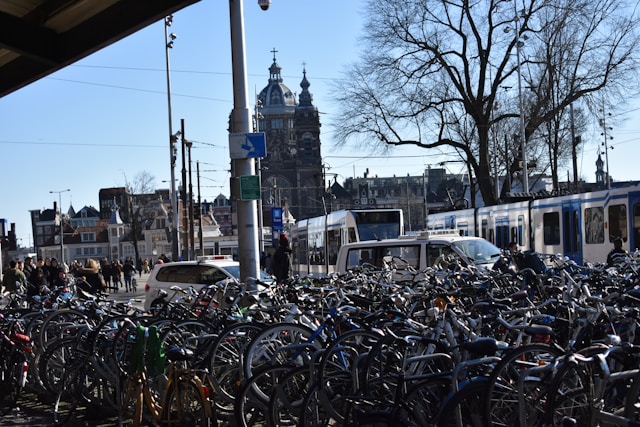The War of the Bikes in Amsterdam
If you have lived in Amsterdam long enough, you have probably heard the phrase "the war of the bikes." Cycling is part of the city DNA, but it has not always been the smooth, organized system we know today. In fact, Amsterdam has gone through several phases of bike chaos and right now, a new version of that "war" is unfolding.
The War of the Bikes in Amsterdam
If you’ve lived in Amsterdam long enough, you’ve probably heard the phrase "the war of the bikes." Cycling is part of the city’s DNA, but it hasn’t always been the smooth, organized system we know today. In fact, Amsterdam has gone through several phases of bike chaos and right now, a new version of that "war" is unfolding.
The original War of the Bikes
Back in the 1970s, Amsterdam was in crisis. Cars dominated the streets, accidents involving cyclists and pedestrians were rising, and the city was becoming less livable. In response, grassroots movements like Stop de Kindermoord (Stop the Child Murder) pushed the government to make space for bikes again. What followed was sometimes called the “war of the bikes”: a struggle between car traffic and cycling activists. Out of this conflict came the extensive cycle path network that makes Amsterdam world-famous today.
Why the war has returned
Fast forward to the 2020s and cycling is again at the center of a heated debate. This time, it’s not cars versus bikes - but bikes versus bikes.
Amsterdam’s cycling lanes are now packed with:
-
Traditional city bikes moving at a calm pace
-
Electric bikes (e-bikes) that can reach 25 km/h with little effort
-
Speed pedelecs that can go up to 45 km/h
-
Cargo bikes carrying children and groceries
-
Food delivery riders racing to meet deadlines
With so many types of bikes sharing the same lanes, speeds and expectations clash. Faster riders weave through slower cyclists, creating dangerous situations. The once peaceful cycling infrastructure now feels overcrowded, sparking complaints from both locals and visitors.
Amsterdam’s new test: fast bikes on the road
To tackle this, the city of Amsterdam is experimenting with a new approach. In certain areas, speedy bikes like speed pedelecs are being directed onto the car lanes instead of the cycling lanes. The idea is that bikes capable of going 40–45 km/h belong more with motorized traffic than with children on school bikes or elderly people pedaling calmly to the market.
The test has sparked debate:
-
Supporters say it improves safety for everyday cyclists and reduces frustration on busy bike paths.
-
Critics worry that cyclists will be less safe riding alongside cars, buses, and trucks.
Amsterdam’s city government is still gathering data to see if this policy might become a permanent solution.
What’s next for cycling in Amsterdam?
The “war of the bikes” today reflects a bigger question: how should a cycling city adapt to new technologies and new habits? Just as Amsterdam reinvented its streets in the 1970s, it may need to rethink how bikes, e-bikes, and other vehicles share space in the 2020s.
For now, one thing is clear: the bicycle is still king in Amsterdam. But the crown is being challenged—this time not by cars, but by bikes themselves.
Why bike insurance matters in Amsterdam
With so many bikes on the streets and so many types of them accidents and theft (500.000 a year) are an unfortunate reality in Amsterdam. A good bike insurance policy can save you money and stress. Whether you own a traditional Dutch omafiets, a pricey electric bike or a bakfiets for the kids, insurance covers you against theft and often against damage from accidents. For expats, this can be especially helpful: navigating repair shops, replacement costs and Dutch bureaucracy after a stolen or broken bike is much easier if your insurance takes care of it. Considering the value of modern e-bikes and speed pedelecs, bike insurance is becoming less of a luxury and more of a necessity.
Photo by Calum Hill on Unsplash